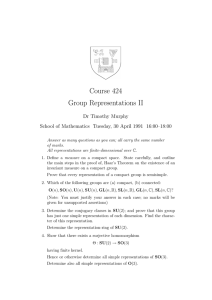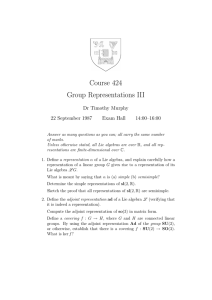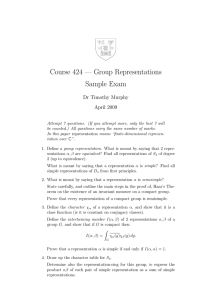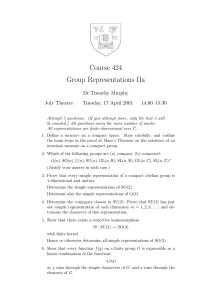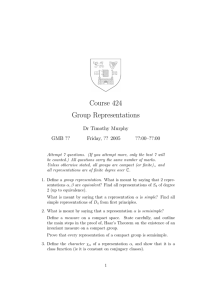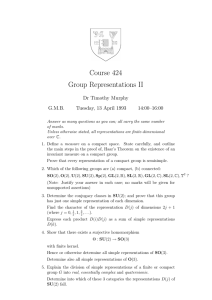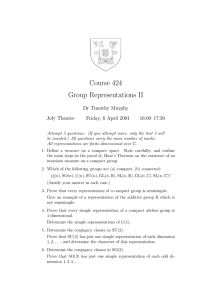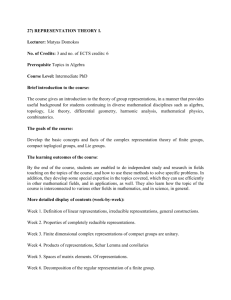Course 424 Group Representations Dr Timothy Murphy G.M.B.
advertisement
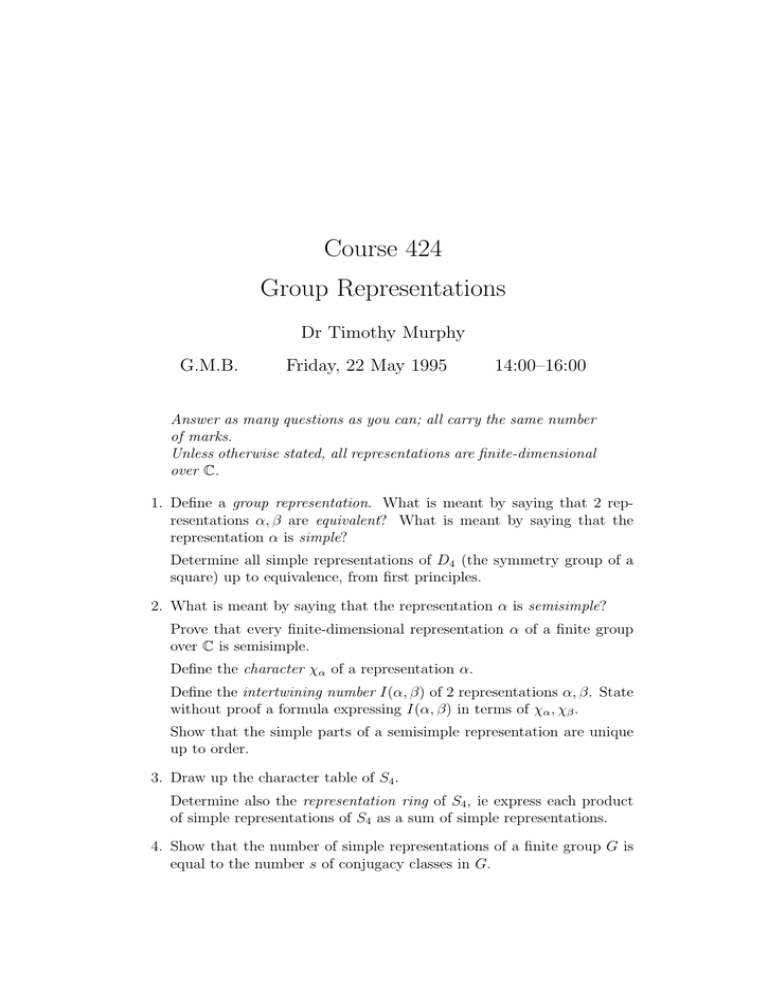
Course 424 Group Representations Dr Timothy Murphy G.M.B. Friday, 22 May 1995 14:00–16:00 Answer as many questions as you can; all carry the same number of marks. Unless otherwise stated, all representations are finite-dimensional over C. 1. Define a group representation. What is meant by saying that 2 representations α, β are equivalent? What is meant by saying that the representation α is simple? Determine all simple representations of D4 (the symmetry group of a square) up to equivalence, from first principles. 2. What is meant by saying that the representation α is semisimple? Prove that every finite-dimensional representation α of a finite group over C is semisimple. Define the character χα of a representation α. Define the intertwining number I(α, β) of 2 representations α, β. State without proof a formula expressing I(α, β) in terms of χα , χβ . Show that the simple parts of a semisimple representation are unique up to order. 3. Draw up the character table of S4 . Determine also the representation ring of S4 , ie express each product of simple representations of S4 as a sum of simple representations. 4. Show that the number of simple representations of a finite group G is equal to the number s of conjugacy classes in G. Show also that if these representations are σ1 , . . . , σs then dim2 σ1 + · · · + dim2 σs = |G|. Determine the dimensions of the simple representations of S5 , stating clearly any results you assume. 5. Explain the division of simple representations of a finite group G over C into real, essentially complex and quaternionic. Give an example of each (justifying your answers). Show that if α is a simple representation with character χ then the value of X χ(g 2 ) g∈G determines which of these 3 types α falls into. 6. Define a measure on a compact space. State carefully, but without proof, Haar’s Theorem on the existence of an invariant measure on a compact group. To what extent is such a measure unique? Prove that every representation of a compact group is semisimple. Which of the following groups are (a) compact, (b) connected: O(n), SO(n), U(n), SU(n), GL(n, R), SL(n, R)? (Justify your answer in each case.) 7. Determine the conjugacy classes in SU(2). Prove that SU(2) has just one simple representation of each dimension 1, 2, . . . ; and determine the character of this representation. If D(j) denotes the simple representation of SU(2) of dimension 2j + 1, for j = 0, 1/2, 1, . . . , express the product D(j)D(k) as a sum of D(j)’s. 8. Define the exponential eX of a square matrix X. Determine eX in each of the following cases: −1 0 1 0 0 1 X= , X= , X= , 0 −1 0 −1 1 0 X= 0 −1 , 1 0 Which of these 5 matrices X are themselves expressible in the form X = eY , with Y real? (Justify your answers in all cases.) 2 X= 1 1 1 1 9. Define a linear group, and a Lie algebra. Define the Lie algebra L G of a linear group G, and outline the proof that it is indeed a Lie algebra. Determine the Lie algebras of SU(2) and SO(3), and show that they are isomomorphic. 10. Define a representation of a Lie algebra; and show how each representation α of a linear group G gives rise to a representation L α of L G. Determine the Lie algebra of SL(2, R); and show that this Lie algebra slg(2, R) has just 1 simple representation of each dimension 1, 2, 3, . . . . 3
